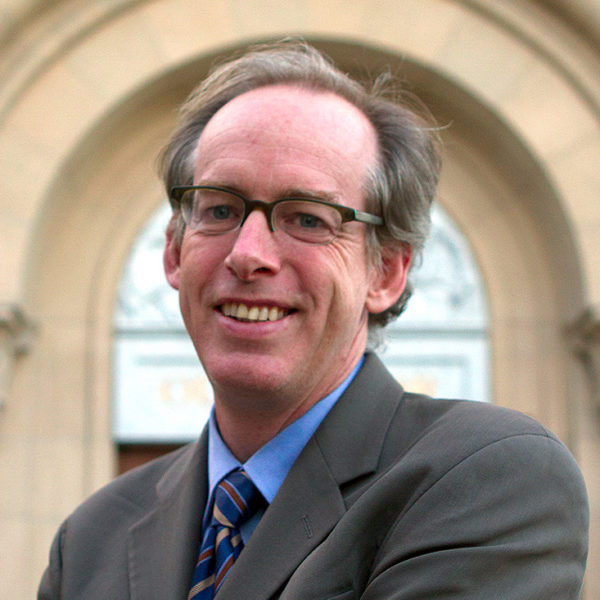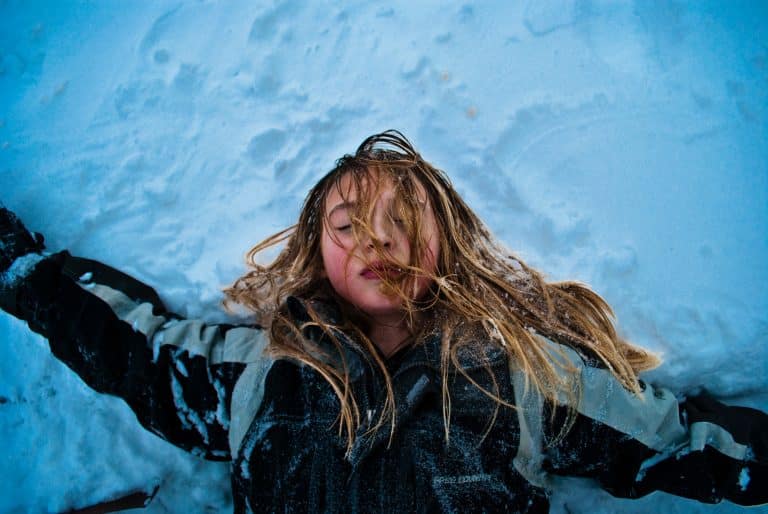
Image by Stuart L. Chambers.
A Hundredth Part of a Day
Fifteen minutes is a hundredth part of a day, just about. (It is 1/96th.) Andy Warhol made 15 minutes proverbial, the pop culture equivalent of a flash of light in a steel cooking pan. For statisticians it is a rounding error, a difference that makes no difference. But for me, to spend a hundredth part of a day in the woods has made all the difference.
A few steps into the forest of Samuel P. Taylor State Park, just north of San Francisco, I was in: needles underfoot, air cool and a bit damp, creek running to the left, stands of tall redwoods and Douglas firs to each side. I followed the slight ascent, glad to be away from car and tent and fire pit, and pleased that the mountain-grade leather hiking boots I’d worn all week, in airports and restaurants, on pavement and sand, were finally being hiked in.
I could have hiked all morning, but I stopped after ten minutes, just past a fallen redwood, so as to be able to say to my sons, later on, when they resisted a hike, “Come on – just ten minutes up and ten minutes back.”
It wasn’t a hike by any standard applied at REI or in the pages of Outside magazine, not a hike worthy of my Merrell boots called Wilderness. Many people would say it wasn’t a hike at all.
And yet as I looked around, there was nothing but trees in any direction. I was in the woods. In the woods. I pondered the expression a moment. In theory, if I walked for another hour, or three or eight, I would be deeper in the woods, more in the woods. But would I actually be?

I looked around again, this time via the screen of my camera. Nothing but trees in any direction, and they seemed to be the woods’ own answer. Once you’re in the woods, you’re in the woods. Even a little way in is in.
Going back down the trail took five minutes, not ten, and I relished every step. I was in a redwood forest in California: what could be better?
Back on the pavement, the Robert Frost poem that makes the woods a metaphysical theater came to mind:
I shall be telling this with a sigh
Somewhere ages and ages hence:
Two roads diverged in a wood, and I—
I took the one less traveled by,
And that has made all the difference.
That I was pondering metaphysical micro-distinctions at all was owing to an experience I’d had a couple of days earlier: an experience that seemed to me to refute some current ideas about how we spend our time — to thwart the nostrums about “grit” and “outlier” commitment, and how vital they are to the success of successful people.
Back in New York I had just read William Finnegan’s book about surfing, Barbarian Days. Ravishing as it is, I had closed the book without feeling an impulse to surf. I didn’t expect to get a chance and didn’t feel moved to make one. It felt (I am just past 50) too late to start.
My wife and I and our three sons were visiting extended family, two different sets, in the Bay Area. First we went to Santa Cruz, where a set of cousins had rented a house near the beach for us all to spend time together in the days after a cousin’s bar mitzvah. Five of the cousins (and spouses) of my generation are avid surfers. And so a dozen of us, adults and children, portaged boards, wetsuits, caps, footies, and the like across the beach to the break — the five of them prepared to show the rest of us how to surf.

Mark is an emergency room doctor who took up surfing after a childhood spent skiing in Vermont. I zipped into one of his old wetsuits and took a longboard, white and blue. He led me out toward the waves, where teenagers and adults were gaggled, afloat and paddling. “This place is perfect today,” he shouted, “absolutely perfect.” He told me to turn the board until I was facing the shore and the cliffs behind it. Expertly, he previewed an approaching wave — “This one is perfect, perfect.” — and told me to hold on tight. Then he pushed the board, and I felt the ocean bulge beneath the board and carry it toward shore, the whole way there, right up to the sand, while I clung frog-like to the top.
Mark waved me back out and we repeated the procedure, and then I surrendered the board to another cousin. I had surfed for the first time. I hadn’t stood up on the board, but I had felt the swell of the ocean, the brute strength of the wave, the speed of the board, and the way they all come together to produce an experience like no other. It had taken about 15 minutes.
The next day, the place was perfect again, and in between setting up gear for the group and leading an expedition for ice cream, I did it twice more. That day, I felt the danger of surfing, too, when the board beneath me headed straight toward a giant rock jutting out of the ocean, and I pulled hard to the right, not realizing that the thing to do was jump off.
Sure, it was akin to a bucket-list experience in some respects. But the feeling was counter-BL, even anti-BL: not of a box being checked or a goal being met, but of a door being opened. I surfed.
Like the change marked by a bar mitzvah, the change, outwardly slight, was inwardly profound. Was I all the way in? I wasn’t standing; I wasn’t all the way in any more than a thirteen year old is all the way into adulthood. But any surfing I do from now on will follow on a continuum with that first time. Now that the threshold to surfing has been crossed, standing up on the board and riding the wave seems possible in a way it didn’t several weeks ago. It is a next step, something I hope I get to do.
Mark pointed out that we surfed in one of the most famous breaks in the world. A little further along shore, the Pacific Ocean has cut a sharp curve in the earth: this is Steamer Lane, where you can stand on a cliff next to the lighthouse that is a surfing museum and look down at dozens of grandmaster surfers riding waves of the scale I remember from watching ABC’s Wide World of Sports in the 1970s. On Pacific Avenue in Santa Cruz, Pizza My Heart sells a slice and a T shirt for — and on the black shirt now on the top of a pile of folded laundry in our apartment in Brooklyn is a woodcut-style graphic of a surfer on Steamers.

It’s strange to think that as a newbie I rode the same waves that some worldbeaters on Steamers surfed. They caught a wave and climbed atop it, twisting and cutting and teetering toward the cliffs; round the bend a few minutes later, several hundred yards in, I humped what was left of the wave and glided toward shore. That wave, giant offshore or subdued near the sand, is the same wave In the same way, it seems to me, balletic board-riding at Steamers and board-hugging near the pier are more alike than not.
Malcolm Gladwell has said (notoriously) that it takes 10,000 hours for a person to gain the mastery of a discipline that will set her apart from the crowd. Angela Duckworth has it (lately) that the character trait we ought to cultivate is grit — the stubborn stick-to-it-iveness that enables some people to set goals and achieve them while others do not.
There’s something to those formulas, but they are formulas for achievement, not experience. In the realm of experience, I’d suggest, a hundredth part of a day is decisive. Fifteen minutes. A hundredth part is the difference between doing something and not doing it. It’s the difference between an experience envisioned or postponed or never-dreamed-of and an actual experience, one that leaves you changed — initiated and ready for more.
We drove out of the state park and up Mount Tamalpais, parked the car near the top, walked the path looping around the summit, climbed the rocky trail to the lookout, and looked. There was San Francisco, like a many-masted ship with the Golden Gate Bridge as its figurehead. There was Berkeley; there was Oakland. There was a high mountain, pointedly volcanic in shape, and some lower mountains, brown-backed and sun-dried. There was the Pacific, and Asia in the invisible distance.
We looked for 15 minutes, then went down. This time it was a Whitman poem that came to mind:
Facing west, from California’s shores,
Inquiring, tireless, seeking what is yet unfound,
I, a child, very old, over waves, towards the house of maternity,
the land of migrations, look afar,
Look off the shores of my Western Sea—the circle almost circled;
I had faced west from California’s shores. I had seen what is there to see. Having seen it, I can see it still — am seeing it right now. Is that all the experience I would want of Mount Tamalpais? Of course not. But that hundredth part of a day created an opening to other experiences on other days and that hundredth part was day-making. Metaphysically, it was enough — more than enough.

